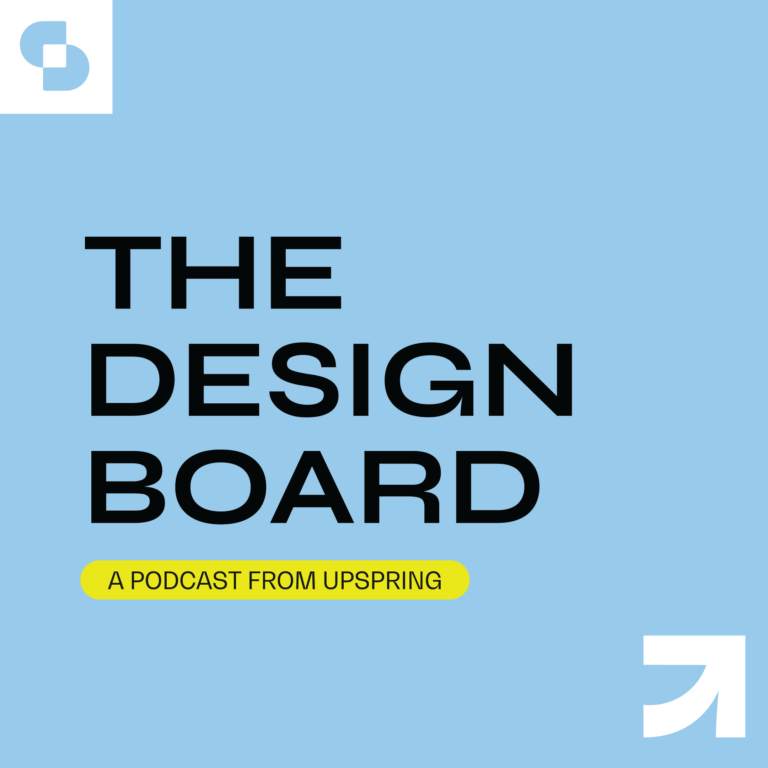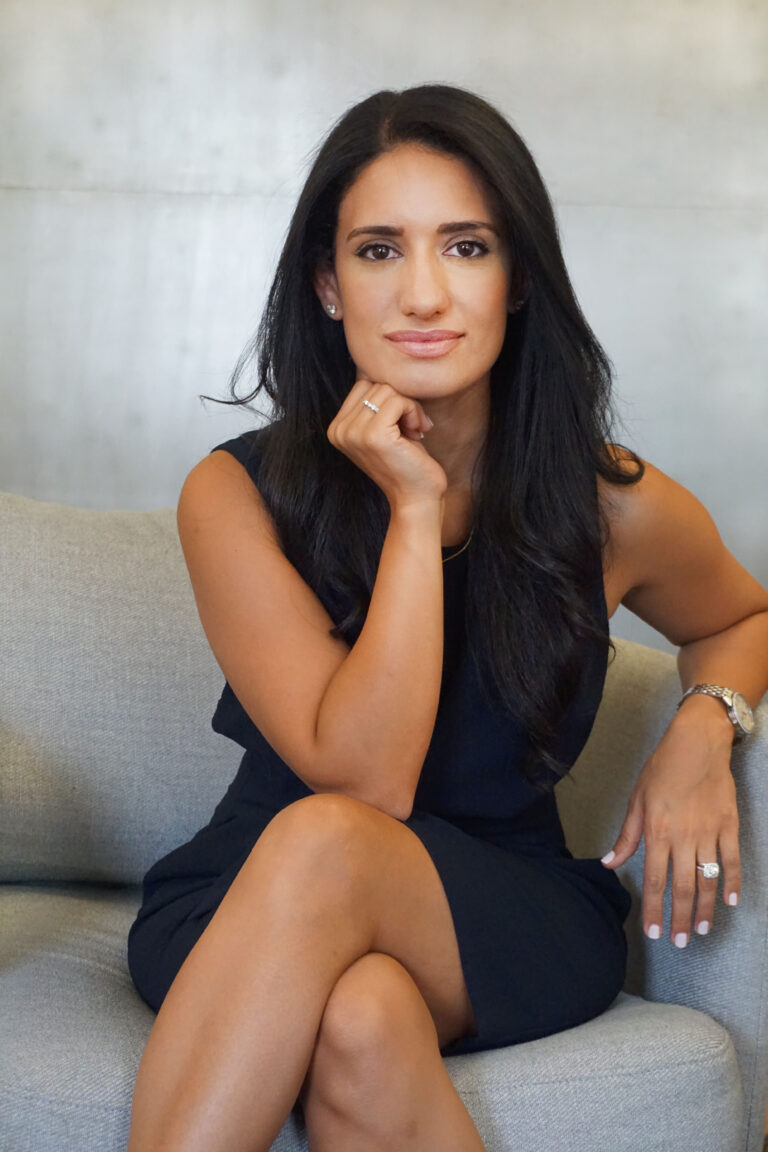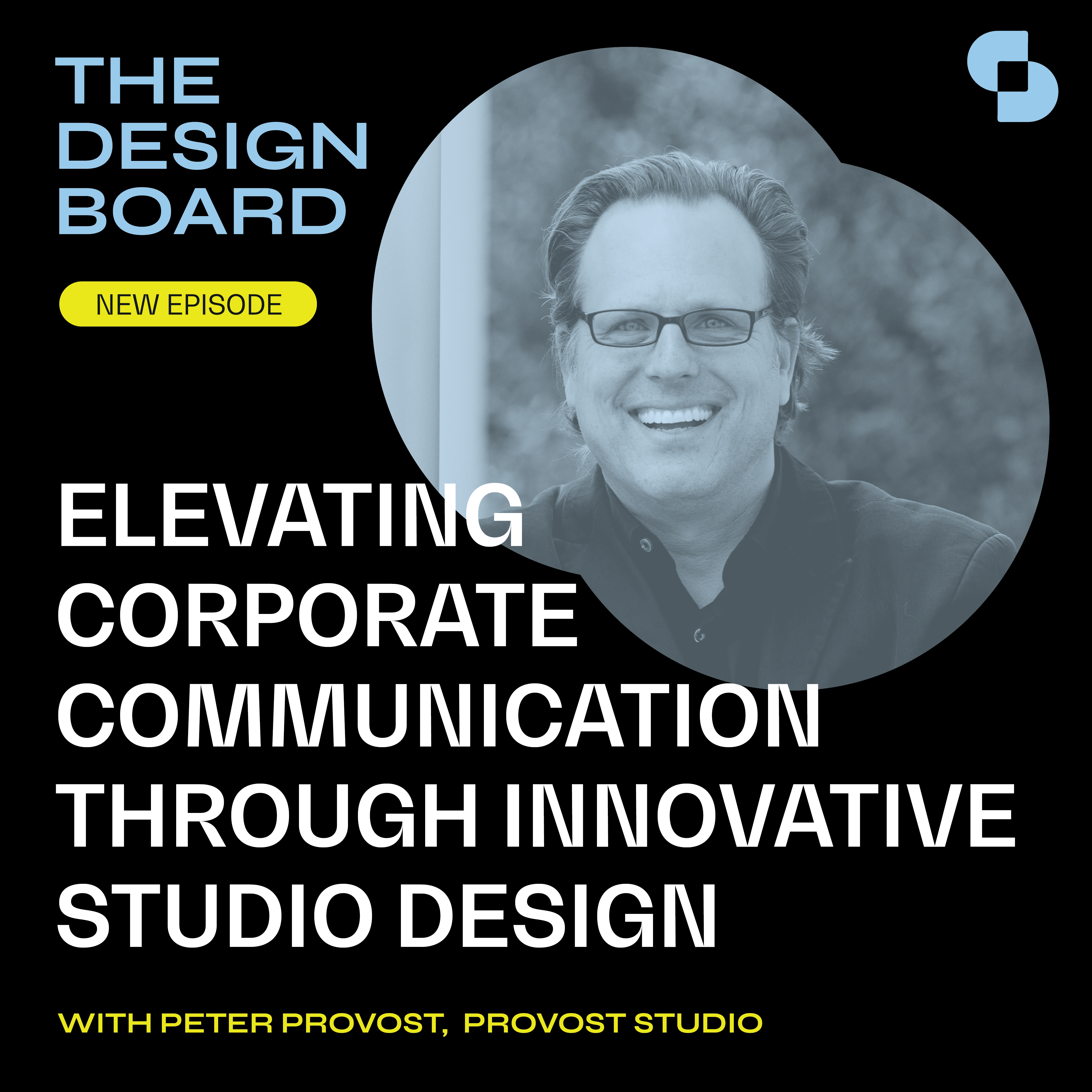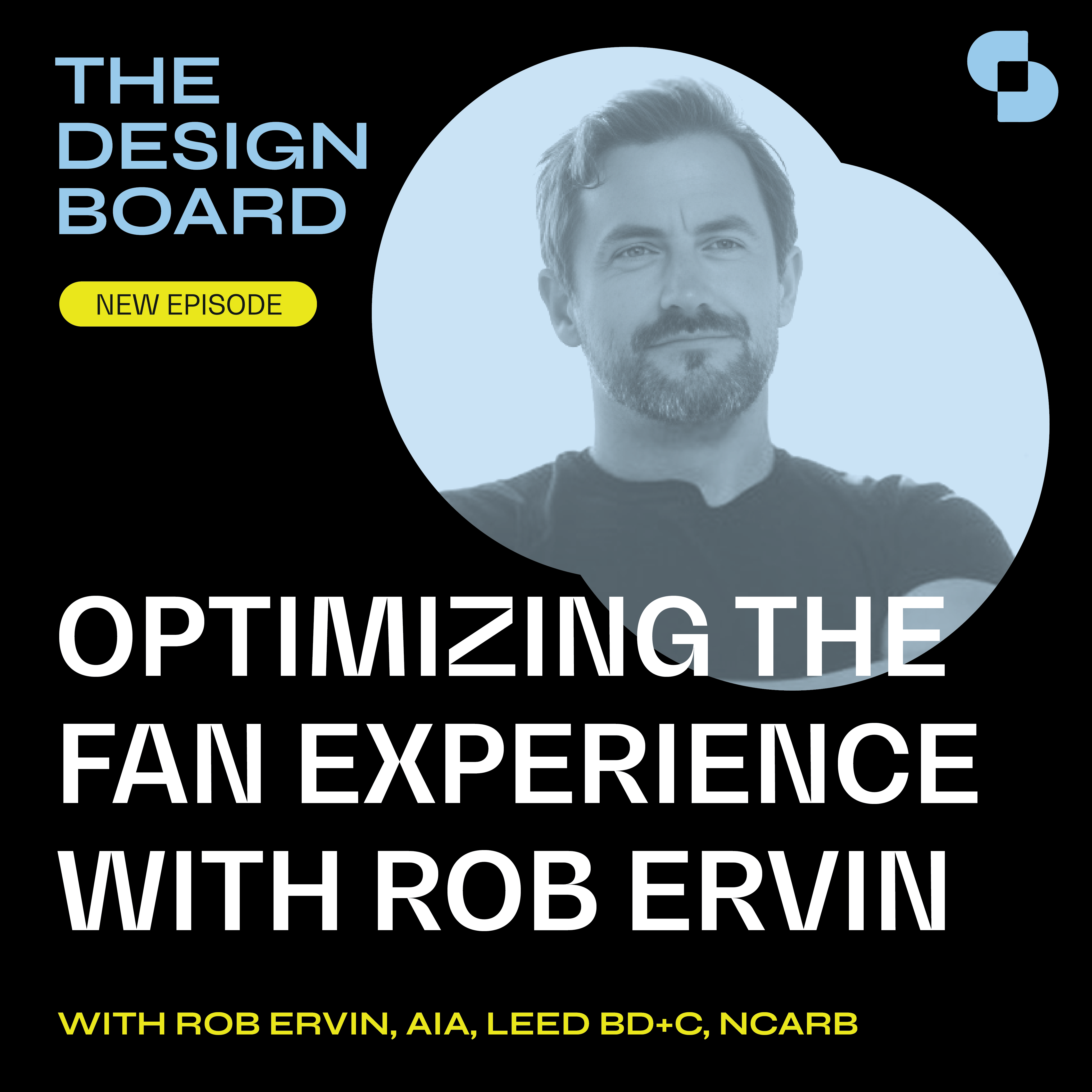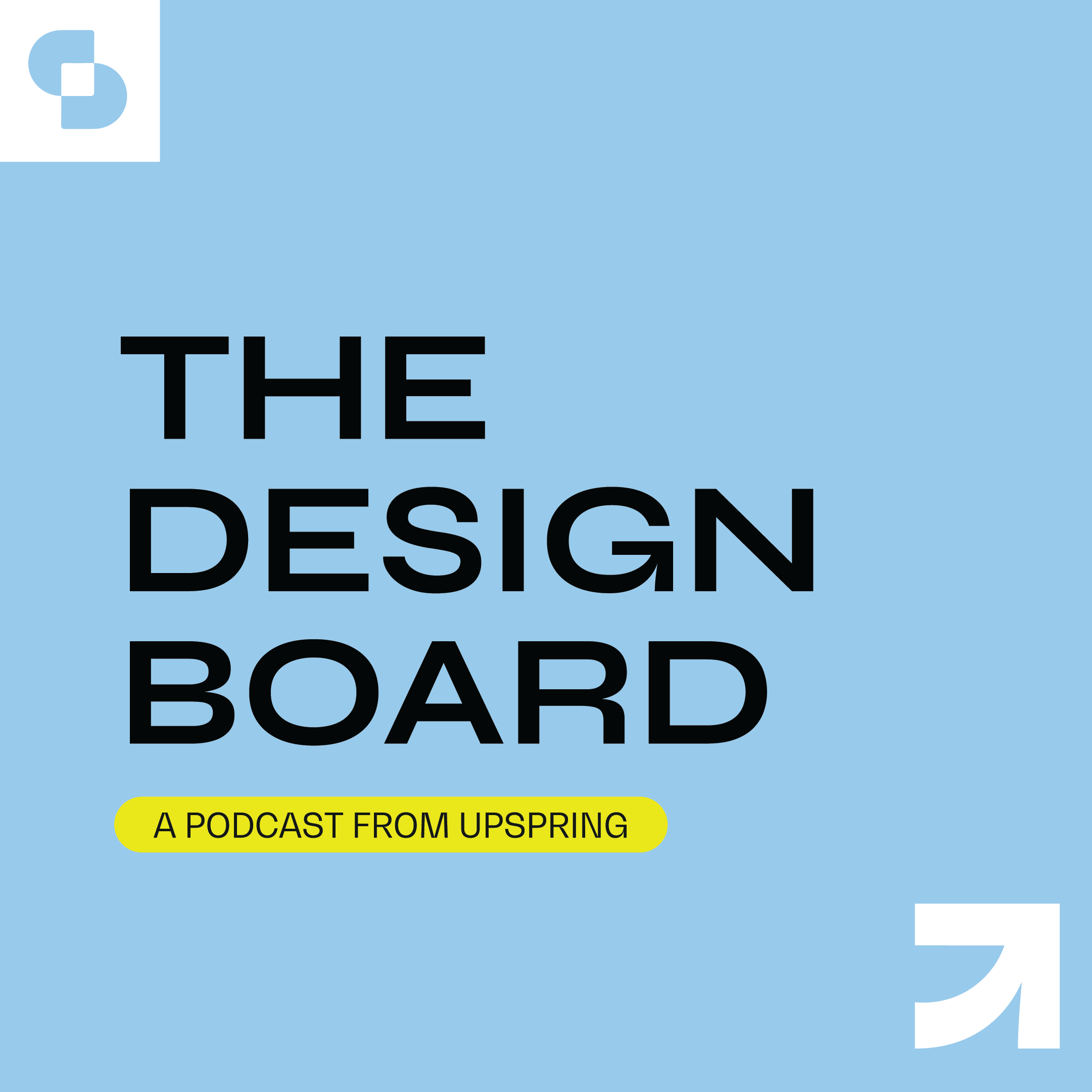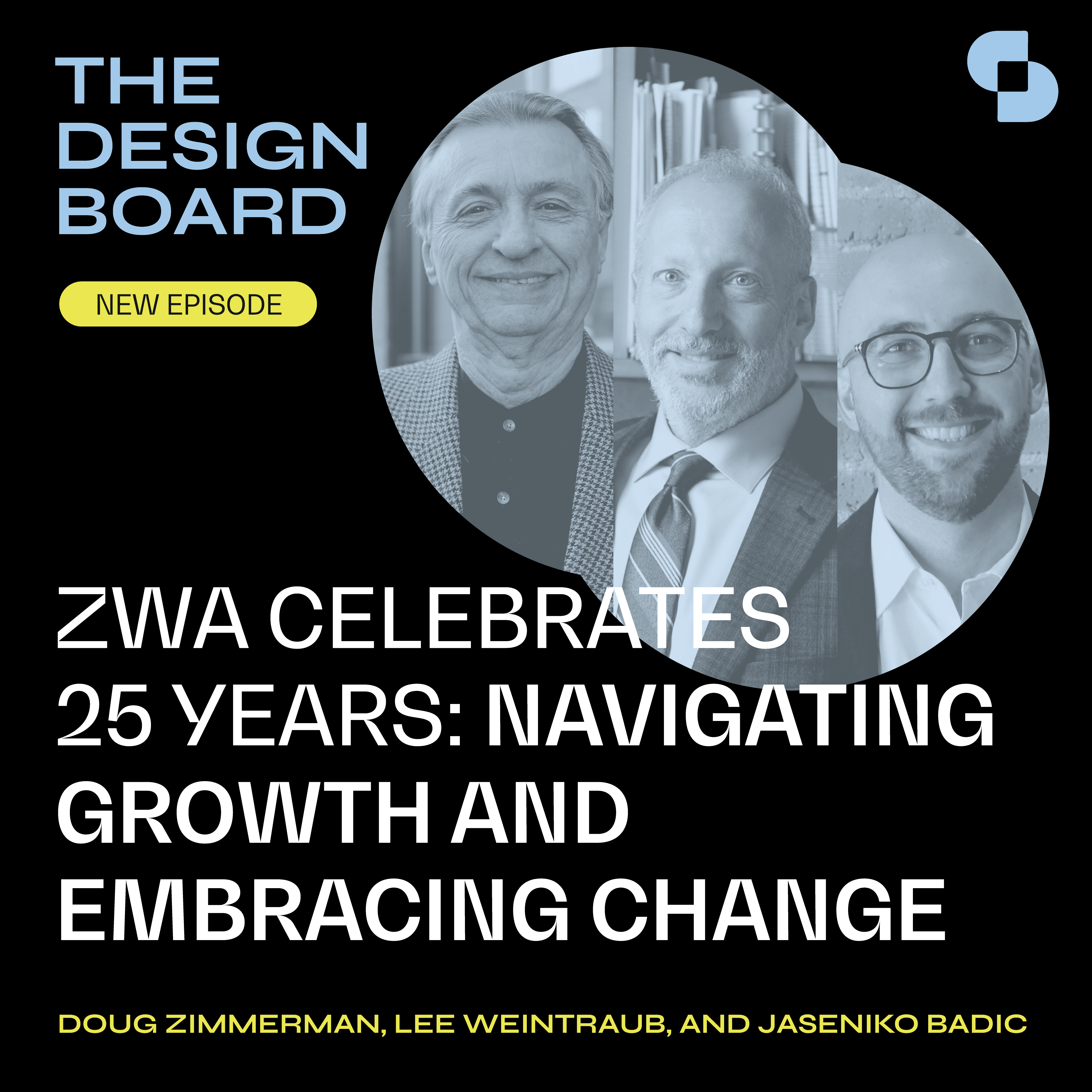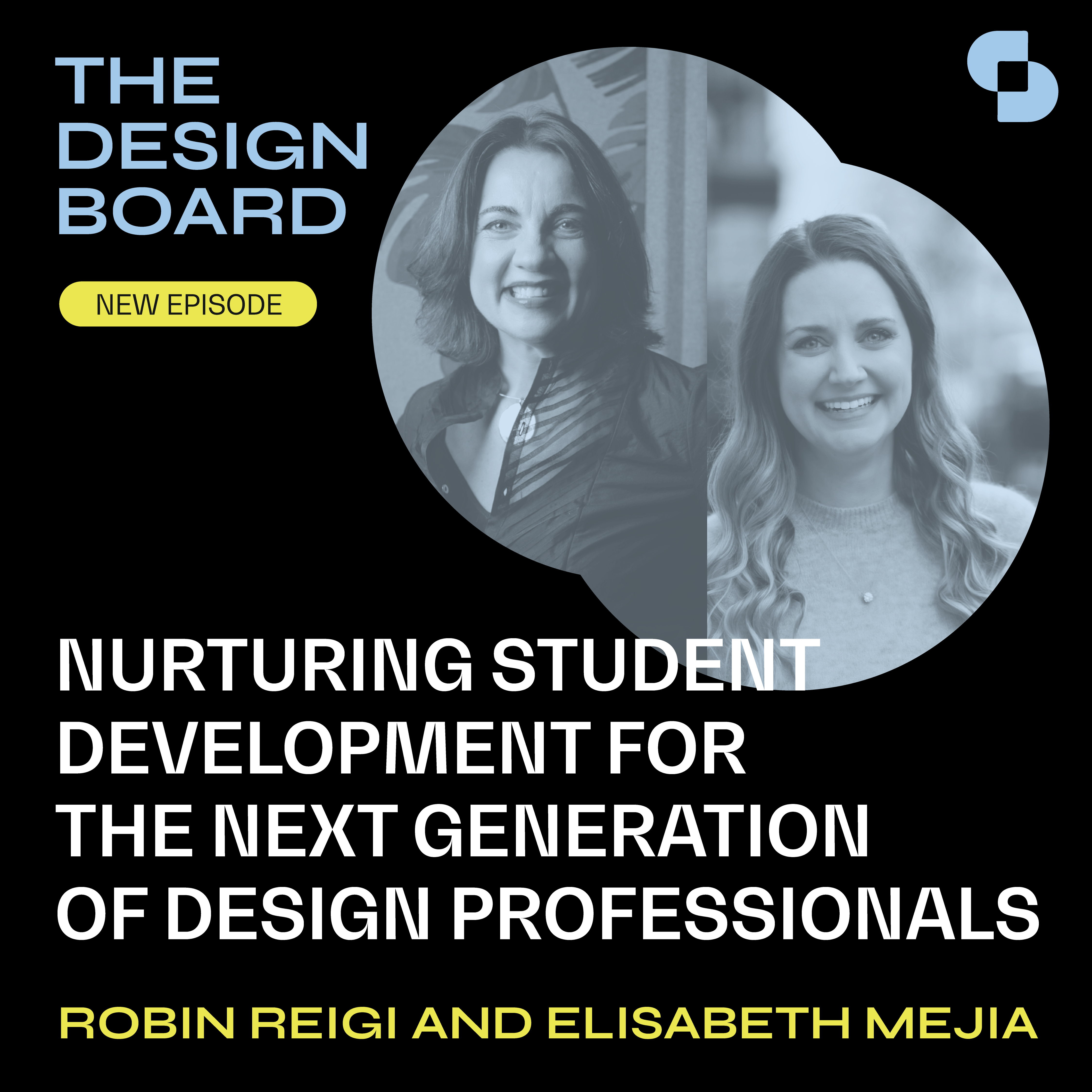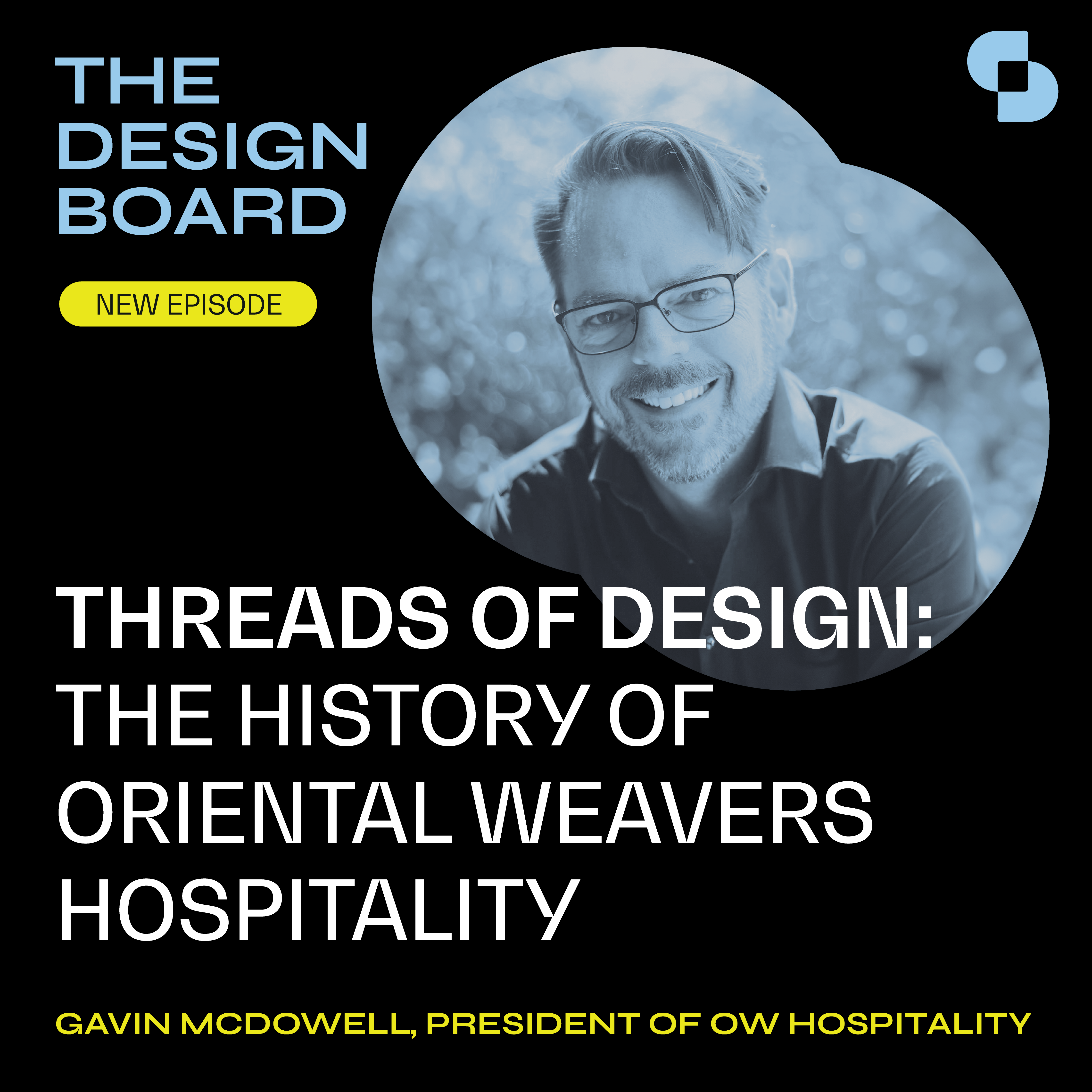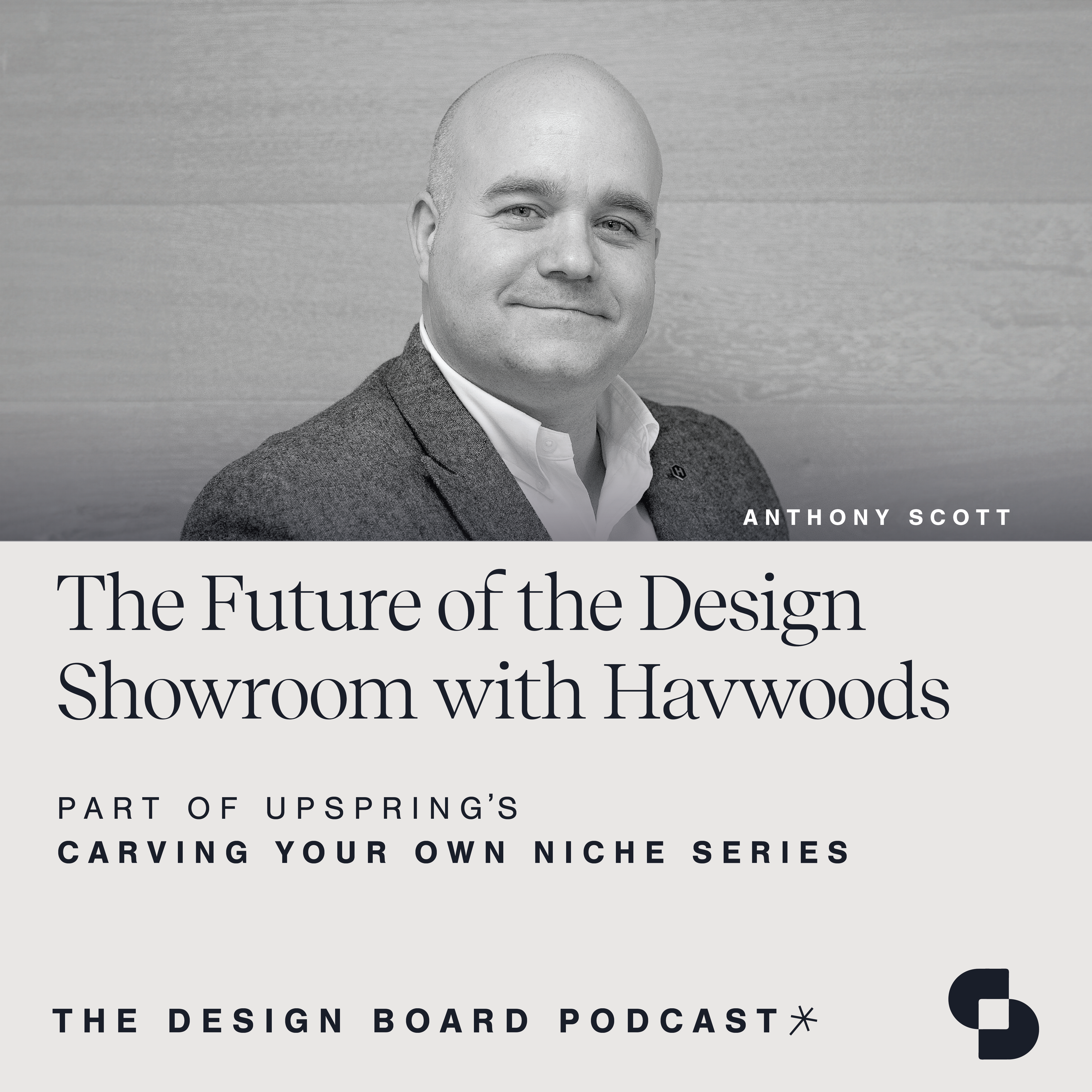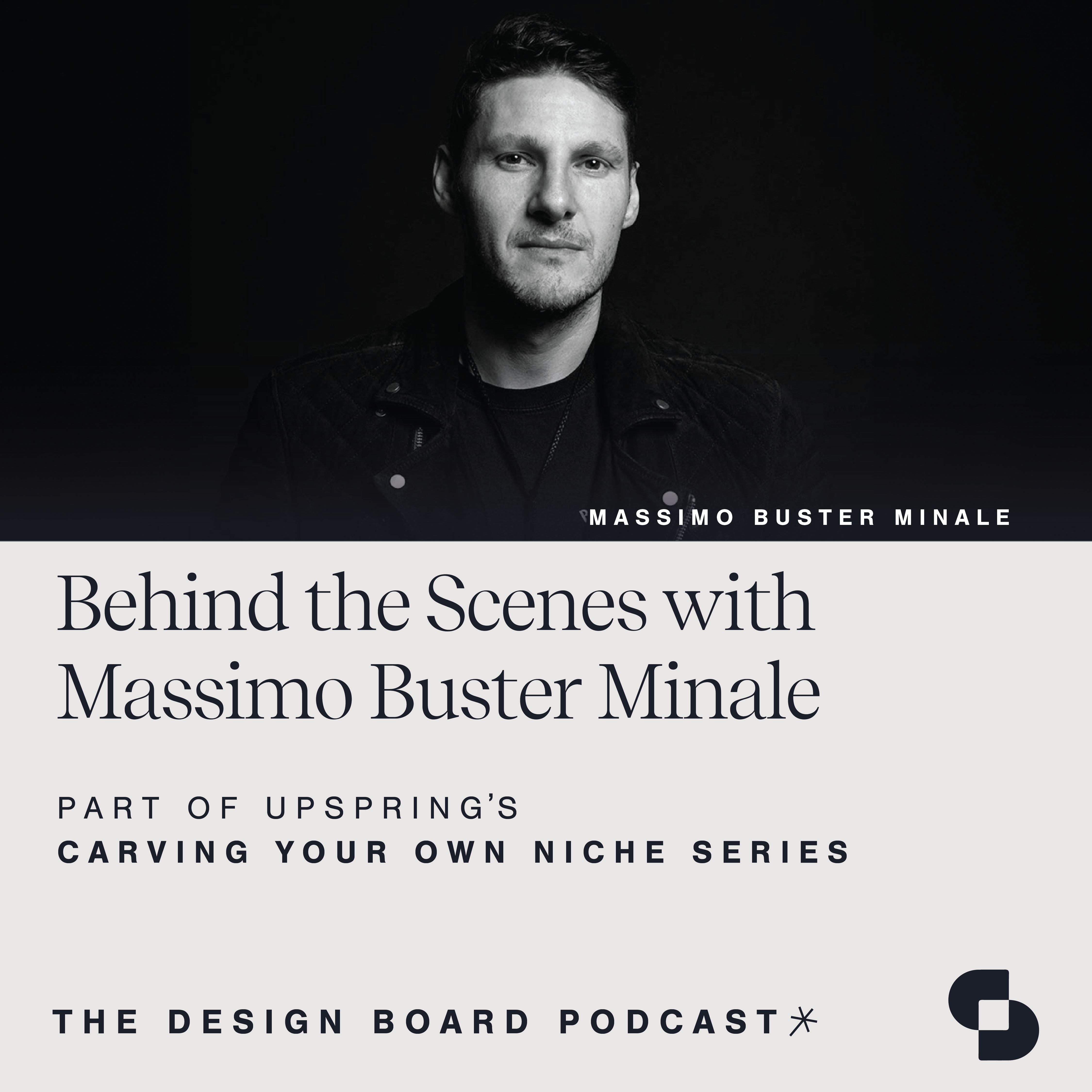Good design has the power to shape our built environment and enhance the quality of our lives. In this episode, host Tiffany Rafii sits down with Michael DiTullo, an independent designer and creative director for Kirei, and Nick Gillissie, Principal – modus ID, to chat about the importance of functionality, aesthetics, sustainability, and everything in between when it comes to product design.
The Design Board, by UpSpring, is a proud member of SANDOW Design Group’s SURROUND Podcast Network, home to the architecture and design industry’s premier shows.
Tiffany Rafii:
Welcome to The Design Board, a podcast created by the team at UpSpring that focuses on design, development and everything in between. We invite innovators in our industry and explore topics that support your growth in every way. The Design Board is a proud member of Surround, a podcast network from Standout Design Group featuring the architecture and design industry’s premier shows. Check it out at surroundpodcast.com.
Hi everyone. Welcome to another episode of The Design Board. I’m your host, Tiffany Rafii, CEO and co-founder of UpSpring, and I’m joined by two incredible industry professionals, passionate about product design. Today we’re going to be chatting about the importance of functionality, aesthetics, sustainability, and more as it relates to product design. But let’s start off with some quick introductions. I’m joined today by Nick Gillissie. Nick is a principal at modus ID, a design consultancy focused exclusively on the development of seating systems and architectural products tailored to meet the unique needs of healthcare, higher education, and the corporate workplace.
Also with us today is Mike DiTullo. Michael has been designing iconic products for some of the world’s biggest brands for more than 20 years. He has worked with Nike, Google, Honda, Converse, Motorola, and has been collaborating with Kirei since 2019. Thank you all for being here with me today. Let’s get into it. Let’s start with the basics. How does product design impact the built environment? Nick, do you want to kick us off?
Nick Gillissie:
You bet. When you forwarded the topic to me, I started thinking about where what we do at my firm fits and my mind started sort of dividing the built environment into three categories. And the first one I thought of was things that we can see and appreciate, but we can never touch, like the nave of a cathedral or I always like when in New York, looking at the top of the Chrysler building, always wanted to put it in my hands, but no, I’m never going to be able to touch that thing. And then there’s things that we can feel but we can’t see. I was thinking of HVAC systems and air coursing through walls and all the things that are invisible within buildings that my discipline doesn’t really have a lot of touch with, but then really impacts how we feel in the space. Well, furniture falls into this third category of things that are both seen and felt.
You see when somebody’s buying furniture, it has to pass two tests. They walk around it, they look at it, is it beautiful? Does it appeal to their senses of design and aesthetics? And then the second test is when they sit at it, is the leg in the right position? Is it the right height? Does it feel comfortable on the bottom edge of their arms? And if it can’t pass both those tests, it’s a fail. And so that’s something that we are really interested in, in our firm. We design systems primarily. And what’s neat about that is that when we design something and it gets built, it’s not a single thing. It’s not this beautiful sort of single edifice, like a really beautiful reception desk or a great big boardroom table. Our stuff tends to be in the tens, the twenties, the thirties, maybe even the hundreds across a floor plate.
So when we are looking at designs and wanting to be responsible about how we impact the built environment, we’re very careful not to over-design, there’s absolutely no extraneous decoration. We try to keep things as clean and as simple and as quiet and as calm as possible because that statement, if it’s one thing is a beautiful thing to look at, but if there’s a hundred of those statements on the floor, it gets noisy. And so for us our product that we work on, it’s that possibility of overwhelming the visual atmosphere of the built environment that we’re always watching out for.
Michael DiTullo:
You just Nick reminded me as you’re bringing up those two iconic buildings, the Chrysler Building and the nave of a cathedral. I lived in San Diego a block from the beach for seven years, and there’s two really iconic buildings in San Diego that come to mind. The Salk Institute and the Geisel Library. Geisel Library is like this brutalist masterpiece. And I remember the first time I went there, I was on the UC San Diego campus being so excited to go see this building. It’s just cantilevered out. It’s like an inverted pyramid almost. It’s so beautiful and I couldn’t wait to get inside it and experience the architecture and the spaces from inside and then look out the views out. And the entire building is filled with terrible furniture. And it’s just like product design can make or break a space and you need to be thinking about it from the very inception of the theme.
Every single thing in the environment that’s not attached to the walls, ceilings or floor, and sometimes even those things are designed by an industrial designer. And if you are not thinking about how all of those things come together cohesively to create the space, this space is going to fall apart. I was really lucky, I’ve worked my entire career in industrial design, but my very first boss at a small studio in Connecticut, he had a background in retail design and he would always tell me, Michael, creating a space isn’t just collecting a bunch of stuff you like and putting it there and hoping it all works. You have to have a curatorial mind. And so obviously if you’re an interior designer, getting to collaborate with product designers and furniture designers is amazing. But even just again, thinking through how those things you specify are going to help the space hang together is so important.
Nick Gillissie:
Yeah, that’s really interesting. We know that we’re the best supporting actor in any interior design. That’s what we’re shooting for. We know that our stuff has to fit into somebody else’s design and it’s not about us. And at some point an interior designer and architect is going to look at our furniture and say, this makes sense for what I’m trying to do or it doesn’t. And we’re trying to create products that work well with other people’s design work and remember that we’re just a player amongst many.
Michael DiTullo:
That’s the exciting thing for me. So I’ve been working with Kirei for about five years. Prior to that I worked at Nike and a bunch of other places. So I was developing these very kind of iconic products and now designing products for other designers, other creatives to play with. It’s a totally different mindset ’cause we’re like four steps removed from the end user. We’re designing something for the architect or the interior designer to then create their design for their client who owns the building, who is maybe not the end user. And the net end user, four people removed from us has to enjoy that thing. And it’s such a fun challenge.
Tiffany Rafii:
I don’t think I’ve ever really appreciated the complexity of that. That’s really interesting when you fully spell it out. In your experience, what are some key elements of good product design? How do they contribute to the overall functionality and aesthetics of the space? Michael, you want to take that one?
Michael DiTullo:
That’s a great question. It’s very contextual, and one of my favorite pieces of architectural criticism ever is a piece I was reading about the Guggenheim in New York when it first opened to the public. And what a critic said about it was, the best thing about the Guggenheim is it’s the only Guggenheim on the street. And I think what he meant by that is the Guggenheim is bounded by Central Park on one side and then all these much older buildings all around it. And so that contrast makes it successful. But if it was on a street filled with white spirals, it probably wouldn’t be as special as it is. And so I think product design is the same. I think for me, I evaluate my own work in terms of does it solve three criteria? One, does it satisfy the needs, the actual real physical needs of end user?
Does it do the job it’s supposed to do? A chair no matter how beautiful, if you can’t sit your behind in it, well it’s not really a chair anymore. So one, does it do that? Two, does it satisfy the need of the company working with, so if they can’t produce it economically on time for the right price, it’s never going to get to the end user and solve its function. So I need to do those two things. And I think those are two common criteria for industrial designers. The third criteria I used to judge my work is does it impact culture? Am I producing something that can inspire someone in some way? Whether it’s meant to stand out and be a statement piece or be quiet and only be noticed if someone takes that extra moment to notice it. I think of myself as a kid.
As a kid, I was just infatuated with design even though I didn’t know what it was. And I would get Nike Air Maxes and just sit on my bed and look at them for hours. Am I doing that job? Am I putting something out into the world that some 14 year old weirdo kid like myself is going to look at and be like, wow, this is amazing. I think of I have this stapler in this desk drawer, it’s this old Swingline from the ’50s that was my grandfather’s and that was on his desk his whole life and it’s on mine. And I love things like that that have stories. I go to thrift shops a lot. I love going to thrift shops and finding products and being like, wow, I wonder what the story is behind this thing. And you know when you encounter something like that and you’re like, they don’t make them like this anymore, that’s what I want to do every time.
Tiffany Rafii:
I love that. Nick, do you have anything to add?
Nick Gillissie:
I liked your last point, the striving to inspire somebody to… You think about musicians wanting to write somebody’s favorite song and if they can reach one person and make that favorite song for one person, then it’s an outstanding success. The ability to create a somebody’s favorite chair or you said stapler or something that inspires somebody else, there’s a lot of warring ideas with regards to what good design is.
International style said if it’s good here, it should be everywhere. And that’s got some pretty harsh critics and been shown to be false. Then there’s others that say, oh, it’s very contextual. And so there’s a lot of debate and back and forth amongst us design geeks trying to figure out which way is the best. And as per usual, it’s always in between those two extremes. But I think the notion of inspiring somebody or have somebody pick up your thing that you designed and have it be their favorite, that’s always going to be something we strive for.
Michael DiTullo:
Yeah, I always like Raymond Loewy’s little acronym of he always strived for what he called the MAYA, the most advanced yet acceptable solution. And I think that’s kind of often forgotten a little bit in industrial design. Ever since the iPod came out, we’ve become obsessed with minimalism and the 10 Commandments of [inaudible 00:10:45]. And I think if you’re making commandments, those are just begging to be broken. But I just think Raymond Loewy’s one rule of the most advanced yet acceptable solution is so beautiful because it’s so contextual. It’s so contextual based on the project and the end user.
Tiffany Rafii:
Well, taking that word acceptable and breaking it up a little bit, there’s so many layers and viewpoints as to what someone might actually think is acceptable. The next thing I’d love to explore with you is sustainability, which really sort of falls in as one of those layers with varying degrees of what someone might find to be acceptable. So with that in mind, how can sustainable design principles be incorporated into product design from the start? And what benefits does this offer both in terms of environmental impact and then that user experience?
Michael DiTullo:
With my work at Kirei, with John Stein who founded the company, sustainability was the core of the company. He was a surfer in San Diego and his memory really kind of drives everything that we do. And he was all about just seeing what was going on in the ocean and the coastline and he wanted to create this company that was all about sustainability, but we try to do it in a way that doesn’t hit you over the head. I think sometimes I’m really happy that we kind of moved beyond in some ways the aesthetics of sustainability. When I was coming up in the ’90s in design, in the early 2000s, things that were sustainable looked like a granola bar somehow. And I think everything we do at Kirei, you’re like, oh, that’s 60% recycled content, but it doesn’t look like it or the air baffle that we did in collaboration with Nike last year where it’s filled with shredded Nike’s and it just kind of becomes a cool design detail, but you might not even know it.
And I think that’s kind of the next step to build on our last conversation on acceptability. It’s like we just need it to be sustainable. And then I think the next thing I’d love to touch on, and I’m sure Nick could talk about this more, I think the other thing that we almost never talk about with sustainability is durability. So the first step on the sustainability triangle, reduce, reuse, recycle, they’re in that order for a reason. Reduce is the idea of can we make less and to make less, it means we need to make better. So can we make something that instead of in a public space getting worn out in five years, can it last 15 years? Can it take the space of three life cycles? And so I think that’s something we need to be thinking about from the onset as we design products for physical spaces and public spaces and that architects and interior designers need to be asking, okay, maybe it’s more of a upfront cost, but the lifecycle cost is going to be less and the carbon footprint of that is going to be much less.
Nick Gillissie:
Yeah, I like your comments about getting past the sort of braggardly sustainability with little flex of granola in everything and the fact that proof of the pudding is in the actual object itself, it doesn’t necessarily have to scream I’m sustainable to be sustainable. And for us, we’re in an industry where sustainability is front and foremost along with wellness and a number of human-centered ways of thinking with regards to the products we design. And for our firm, there’s always trade-offs trying to figure out what to do and what the right answer is. This green material might be coming from a very far distance so you’ve got a carbon footprint issue or require a lot of water or whatever.
So the idea of distance emissions and toxicity of the material come into this sort of triangle of how we try to make decisions and we’re starting to see better calculators, better data and analytics that can be applied to even solid models or I listened to another program that you did here on The Design Board on B Corp and I saw a presentation by somebody whose company just became B Corp and they created this really great spreadsheet and they could make decisions based upon materials going into it and determine the carbon footprint based upon a breakout [inaudible 00:14:59].
As these tools proliferate, these decisions that we designers have to make are going to be quicker, a little bit more data driven rather than just gut field driven and also help us if we can plug our goals into these tools and say, our primary goal with this product is to have zero carbon footprint for example, or lowest carbon footprint possible, the decision that we’ve driven along those ways. So we’re going to be assisted by technology in making these most judicious decisions going forward.
Michael DiTullo:
That reminds me, just last night I saw a little YouTube essay by the architect Dami Lee. I don’t know if her, she’s got a great YouTube channel and she did an essay on the renovation of the Portland building. I live in Portland, Oregon now, and there’s this very controversial building downtown, a 15-story building called the Portland Building designed by Michael Graves and it’s kind heralded as being one of the very first public post-modern buildings.
And I think it was ’84 it was built, so very early in Michael Graves’ switch from international style to post-modern. But in the essay she talks about, it was completely remodeled a couple of years ago and there was a contingent of people that wanted it torn down, but the way they argued for it was twofold. One, the historic relevance of it being one of the first post-modern buildings and two, just the carbon footprint of building a new 15-story building would’ve been more than double. And they used this tool called Cove that helped to calculate what the carbon footprint would’ve been kind of before pen hit paper. And I think that’s really cool to see how these new tools are going to help us to make better educated decisions.
Tiffany Rafii:
I love that. I’m going to dive into some tech right now just because we were sort of alluded to it a little bit. So speaking of technology and how that is helping really identify sustainability practices and really help companies and individuals make smarter decisions that fall in line with what they personally deem to be acceptable, what impact do you think emerging technologies such as 3D printing or augmented reality will have on product design? Tech is everywhere. How does it impact what you do?
Michael DiTullo:
I like to think of it as just tools. I graduated design school in the late ’90s and I feel really lucky to have kind of come up as a designer in that moment because the way we do things now 25 years later is totally different than the way I was taught. And Nick, you might agree, the first day of design school, it’s like we were setting up a [inaudible 00:17:36] and we were hand drafting everything. My first design school, we were drawing things full scale and folding it up and shipping the drawings to a factory and faxing sketches to clients was like, wow, this is insane. We could fax things to them.
Nick Gillissie:
We’re almost exactly the same vintage.
Michael DiTullo:
And in the studio in 1998, there was only one computer that had email on it. And so it’s so insanely different to how I do literally everything today, literally have CAD files in the cloud that I’m collaboratively working on with clients and I think the net effect of these tools are one, there’s an efficiency component. I think that’s good to a degree, you can get so efficient that the process is robbed and you lose creativity. But I think the more important part is the collaborative notion that we can open up a Google Doc and edit things back and forth and we could do the same with a CAD file or a Miro board. And so I guess I see things a little bit with a old man’s point of view of these new tools may be less disruptive. I think there’s a lot of like, oh my god, AI’s going to change everything and I just get more excited.
I don’t even think we know what it’s going to do yet. This is a new pencil, let me play with it and let’s see what happens. I’ve done some building in CAD with augmented reality and it’s interesting, it’s a little also antithetical to the way I work. I tend to work with a messy desk and there’s Pinterest boards open at magazines and sketches, and I’m talking to people. I’m a very kind of talkative person. So it’s the idea of having goggles on and not being able to see anything but my work is a little scary to me, but the fact that I could put goggles on and Nick could put goggles on and we could see it together from across the country is also exciting. So I guess we’re going to have to see where it goes.
Nick Gillissie:
Yeah, that’s funny. Yeah, I started in ’94, 2 years before Hotmail and yeah, I remember those pens and rapidographs and thank heavens we’re not doing that anymore. Everything, how we document the technical end of design now is just so far superior to what could be done before it. It’s extended our capabilities. And funny enough, last night I was just at a professional association, my professional association here in Ontario just had an open panel for speakers talking about how AI tools are going to alter our process. And from what I saw last night, it’s very much useful right now as a conceptual tool for iterating on concepts. And so we’re going to try it out here and I hadn’t thought about using it before last night, but it’s a pencil I think we got to grab and take a look at and see what it does as you use that analogy because you’re not sure what it’s going to do and you’re pretty sure that with every one of these technologies, their role is going to expand over time.
To what extent are we going to be seeing 3D printed things as finished consumer products in the next couple years? In certain respects, yes. Already we’re seeing [inaudible 00:20:42]. Is it going to go beyond that? It’s hard to tell. The only people who can tell are working on them and actually developing these processes and these methodologies and we’ll see what they can come up with. Sometimes you see breakthroughs and sometimes they stall and it’s really difficult to determine which one’s going to stall at where, but just keeping apprised of it in our firm is going to be something that we’re looking forward to in the next couple years.
Michael DiTullo:
Nick, that remind me, I’m going to grab something real quick right next to my desk. This is a little 3D printed maquette of a chair. We can’t sit in it, I think to 3D print something life-size, the printer is going to be a bajillion dollars right now.
Nick Gillissie:
Yeah, right now.
Michael DiTullo:
That cost will come down and you can print things in parts and no matter how many goggles you have and all these things, it is just really nice to have a little part and assess these forms and oh, is this intersection exactly what we saw on the screen? And that kind of iteration is really fun just to be able to bounce that back and forth really quick. And again, us being of that vintage, I’m not afraid to take a rasp and a file and hack at it and then go back to CAD.
And so again, I think it’s just not letting these tools take over the process, but let them be a little boost when you need it and to use it appropriately. What’s the old saying to someone that has a hammer, every problem looks like a nail. And so I see these people, I see some young designers on LinkedIn already being designer and prompt engineer. It’s like, we don’t even know what that is yet. Just chill. Be a designer first and let the tool follow from that. Don’t focus on just being the owner of a tool because the tools are going to change. The tools are going to change faster than you think.
Tiffany Rafii:
Yeah, Mike, my son turned seven on Sunday and one of his gifts was this thing called a Toybox. Have you ever heard of Toybox? It’s this tiny 3D printer for kids. The thing’s amazing. They went to sleep and I was printing things just like for fun, but exposure to these tools and technologies, my seven-year old is having exposure to it, and so they will very much become part of the process, but the education surrounding their use and the way they might fit into that process, as you mentioned, is going to change a hundred times. If my seven-year old already has access to that 3D printer, just sort of imagine when he’s 25-
Michael DiTullo:
That’s funny
Tiffany Rafii:
… and what that’s going to look like.
Nick Gillissie:
The thing that we’ve been hearing or the word that was used last night as the process will become democratized. Back when Michael and I started as industrial designers, you had to be a good sketcher. You had to be able to hand draw. And then as the computer tools came forward, that need to be able to do pencil and paper sketching became not all important. It’s still useful, it’s still fast, it’s still something I use. Pretty well everyone our firm has it, but then those people with brilliant ideas bursting out of their head that just didn’t have the hand-eye coordination to be a good sketcher, were able to take up computer tools and let their great ideas flow using these new technological tools.
And the more tools come forward, the more a wider swath of people with interesting ideas will be able to move into the field and use them to great effect. And to some people that’s scary. I don’t think that’s necessarily that scary to me because again, it’s all about what’s in the brain case that’s coming out and by whatever means necessary on getting onto a piece of paper or into a 3D printer or some sort of modeling format.
Tiffany Rafii:
A hundred percent
Michael DiTullo:
Our ideas and our evaluation skills will become that much more important. We all knew that guy in design school who could draw everything but didn’t have a single idea in this brain. And so being able to sketch well is, again, a tool, but if you don’t have an idea, it’s nothing. Sweet nothings. Right now, that’s what I’m seeing a lot out of AI. I’m like, wow, these are visually very interesting, but it’s mostly just a lot of hot air.
And so I’m waiting to actually see some good ideas, but I think that will come. And I think with democratization you get also a lot of the signal-to-noise ratio goes a little wacky for a while until it sorts out. And so I think it will sort out. But I do think there’s this weird thing where there’s this desire to say anyone can be a designer. And I’m like, man, I made breakfast this morning, but I don’t need to call myself a chef. I worked right before this meeting. I sent an invoice to a client, but I don’t call myself an accountant. So I do think there is also we can allow these tools to enable more people to do things and to maybe highlight some people that didn’t have a chance to be a designer and we could still elevate our profession to be like, well, we do have some special skills that are unique.
Tiffany Rafii:
I love that. Well, it sounds like you all are balancing a lot of things from tech and tech integration all the way through to messy desks and 3D printers. So more balancing, how do you approach the balance between a form and function and product design and what challenges can potentially arise when trying to achieve both? Nick, do you want to kick us off on this one?
Nick Gillissie:
Yeah, sure. I can start with this one. We dodge the problem. From our perspective, function drives the bus and form catches a ride, and that is something that can be controversial. Sometimes there’s disagreement about that. I think there’s a pretty famous quote, I think it was an architect that came up with the form follows function adage, but for us, our most rewarding projects start with research into what people need. Whether that research is conducted by our clients or by us or better yet by us with our clients together going forward and trying to take a look at stuff and what people are needing, what people are using. If you’re going to be putting your money where your mouth is with regards to human-centered design, isn’t it a good idea to try and figure out what those humans actually need? And it’s my feeling at least that first and foremost, those needs are functional in their nature.
And then the form follows that. And I think that if you’re going to start falling in love with some certain type of form, some sort of material shape for a design before you try to understand all the things, like who’s the user, who’s the person buying it? And we talked about the purchaser and the designer being very key in that, interior designer being key in that process. Who’s buying it? How is it sold? By what method is it in person? Is it remote? How’s it shipped? How’s it stored? How’s it maintained? What happens at the end of its life? If you try to come up with a form before you’ve considered all those factors, you’re heading for trouble, it’s going to be difficult to make sure that the form you picked just happened to actually magically hit all those things if you have to figure out what they’re after the fact.
But even with all those limitations, all those constraints placed around what the form’s going to be, there’s still always a phenomenal amount of creative latitude there. It’s almost like in certain respects, I feel like too many options can be oppressive in its own right. I heard it’s probably not a true story, but I heard that Picasso used to go to his canvases and just scribble on them to get things started because that white canvas was so oppressive. Where do you start? When you have infinite possibilities, that white canvas, then how do you even know what to do first? As an example, we have a really exciting project launching, it’s a chair, it’s called Res. And our client gave us this really, really wide open mandate. So design a chair for higher education. It’s specifically for higher education. That’s a pretty blue sky mandate.
Usually we’re trying to chase some sort of very specific product category or trying to compete against something that’s on the market that somebody else has. So this notion of a really wide design brief was once exciting, but if we decided to try and just take pen to paper based upon, okay, university chair, okay, let’s start sketching ideas. And Michael and I just dated ourselves. As I said, I was in school two years before Hotmail started and the computer lab was this dingy dark room with great big deep CRT monitors. Nobody owned a laptop because they were outrageously expensive and the computers at the time were for CAD and for word processing and nothing more. So if we were to take that context and try to design a university chair now, I don’t think I’d be the best person to be deciding what needs to be there.
So the research initiative that started the project off involved us going and talking to educators and then spending a lot of time watching where students sat. And it was really fun to watch. Students sit wacky. One educator was saying students will sit anywhere. We started saying, okay, well if we compare this to workplace where we have the most experience, the seating methodology in workplace is very orthodox. I’m a little bit weird, I’ve got my legs crossed here. Most of us are sitting down with our feet on the floor and looking forward towards a computer. The students just are all over the place. But it was really interesting to see what they gravitated towards. And without exception, they gravitated towards places with a surface because they needed to put their tech on it. And sometimes they’d be picking surfaces that were terrible and they’re hunched over and they have this really bad posture that anybody my age would be sort of aching from after an hour at the very most.
They’re dragging their chairs towards electronics, they’re looking for places where they can store their stuff because they’re carrying around thousands of dollars worth of tech and store their stuff in a way that’s safe so they’re not worried about that backpack getting scoffed and they’re losing a lot of money in the form of the technology that they towed around. And another thing that we saw is they’re always going for the soft seats over the hard seats first. So you take all those things and you put them into this interesting sort of set of criteria that you’re looking to design a chair towards and taken together, it actually creates a pretty unique space in which to design a new chair specifically for those needs and the form followed the function in that respect.
Michael DiTullo:
I think I could build on that a little bit. I totally agree with everything you’re saying, and I think we tend to think of the parameters of the product both what we traditionally consider functional and also emotional as kind of dots in a point cloud and the form or the solution is how you connect those dots. And there’s a number of ways to connect those dots. But to me, I like to understand the problem as much as I can. And to me I think the form versus function is a little bit of a false choice. To me, they’re hand in hand, they’re kind of the same thing. And again, this might go back to my time at Nike and my training there, but we were always trained for everything that we do should be exaggerating a functional benefit.
So that’s all at Nike Air is, how do we call attention to this really interesting cushioning technology in a way that gets people excited about it? Because there’s also these other interesting functional parameters of things of how do we inspire people or how do we make people feel a certain way? And to me, that’s also an oddly part of the function as a designer because I’m not an artist. And so it’s like if we’re designing something that’s expressive, it’s expressive for a reason and not just expressive just because we felt like it’s expressive because that’s what this person demands in this, not to dribble in too much MBA speak, but in this whatever market segment we’re in, it’s a lounge chair is typically a lot more expressive than a task chair.
And on that segment that’s what people are demanding. And so we need to think about that. And I think for Kirei we’re often designing these acoustic solutions for ceilings. And we have seen by just what sells in the portfolio, the more expressive clouds that are acoustic clouds that are actually crazier shapes and colors, those are the ones that sell the most, even though they’re 4x the cost. And so our customers are telling us, give us more of this. Give us more things that are actually very visually expressive but also have this functional benefit of acoustics. So I don’t know, I guess the way I like to speak about it to clients is like, what is the function of the form of this? What are we trying to achieve through shape and color?
Nick Gillissie:
I like that mention of cost is king, but if you can create something that really inspires somebody, as we said, that favorite object or something that really is going to be that signature piece, you can blow cost considerations out of the water and create something really special if you manage to hit that need specifically. I’ve seen interior designers spec outrageously expensive pieces, but they spec that one and it’s really important where it’s placed and it’s this really important aspect within the space and the clients buy in on it.
I was actually part of a sales support initiative a number of years ago, and as a result of the RFP process, you could kind of see what the competitor was presenting. So we went out and specified this very, very beautiful, very large 12 person table with this just absolutely delicious veneer with these many layers of clear coat on it. And it was just a fantastic piece and it was expensive. And the client looked at it and ran their hand over it and we knew what we were presenting. We found out what the competitors were presenting, and we knew it was 10 times the cost and we still won. And while they announced our win, the client’s hand was on this piece of furniture. It’s interesting.
Tiffany Rafii:
It’s all about value, right?
Michael DiTullo:
Yeah.
Nick Gillissie:
Yeah.
Michael DiTullo:
I’m obsessed with products that I call single taskers. So a watch is a single tasker. It does one thing, it tells time. A chair is a single tasker. My eyeglasses are a single tasker. A car is a single tasker. It gets you from point A to point B. And yet in these single tasker categories, there’s infinite variation in functionality, in aesthetic, and in price point versus a smartphone. A smartphone’s the opposite. A smartphone is a multitasker. And we’ve seen the form condensed into it’s a black rectangle, but for single taskers there’s like infinite amount of appetite.
Do we really need any new chairs to be designed? Probably not, yet there’s an infinite hunger for what is the next greatest task chair, what is the next greatest side chair? What’s the next greatest lounge chair? And I don’t know, something about us hard programmed into our human psyche to find these kind of tribal indicators in these simple objects of, I don’t know, it probably goes back to when somebody had a nicer club than an next person [inaudible 00:35:40] the caveman times, but there’s something in us that’s just like, oh, I want this thing. This watch is going to be part of my personality now. And I think spaces have personalities. So when you’re spec’ing the furniture for a space or the ceiling or wall system for a space, it’s about communicating the energy that you want that space to give off.
Tiffany Rafii:
Well, speaking of chairs, Nick, I know you specialize in product design for workplace interiors. Can you give us an example of a workplace product that has been well-designed and has had a positive impact on employee productivity and engagement?
Nick Gillissie:
Yeah. [inaudible 00:36:16] seating launched in 2006, same year I started my work in furniture design. I was in high-tech and consumer product before that. In 2006, I started in furniture and you know the product, a high back couch, it’s a soft couch, it’s very rectangular, it’s got sort of a wire tubing framing around the bottom, and it’s got a really, really high back. And it’s kind of like these thin walls and there’s zippers in the corner and they kind of have this billowed surfaces on it. It’s designed by the [inaudible 00:36:44] brothers. They’ve done a number of products that have not only… The products will make the people scratch their heads that are seeing it for the first time, but then end up defining a category. And I remember when it came out, there was some head scratching going on. It’s like, okay, why are those backs that high?
Well, oh, it’s to absorb sound. Does it work? I remember the first time I sat in one, it was actually in the Milan Furniture Fair, in the Vitra booth and in Milan during furniture fair week, there’s lots of espressos being pulled and there’s hissing all over the place and there’s [inaudible 00:37:13] and there’s lots of people talking and clinking of plates because everybody’s eating as they’re doing business. And I sat down in this couch in the middle of the Vitra showroom and it was super busy. And then this deadening of the sound just came around my ears. I’m like, holy smokes, does this ever work. And it’s really funny that they designed this product because it is in part trying to solve a problem that they sort of helped create previously with the move to the benching paradigm for workspace planning. So as a result of removing our panel walls, our cubicle walls, this was less common planning methodology over in Europe where most of this was conceived.
But the idea of open tables where people are speaking, the idea of being able to find a little spot that isn’t necessarily encumbered by the cost of building a room around it, just to sit down and have a quiet talk on your phone or a quiet conversation with somebody, having this couch in such a simple way solve that problem, I felt has been a really sort of interesting and very successful case. And it’s obviously what they say, mimicry is the highest compliment. This notion of the high back chair becoming a product category now in contract furniture is a clear indication to indicate how successful it has been.
Tiffany Rafii:
Mike, I was going to ask if there’s anything you wanted to add.
Michael DiTullo:
I think a lot of industrial designers are obsessed with task chairs because they’re so complicated. And I have to say, I was not a task chair believer. I think maybe it’s my Italian heritage, but I definitely will wear a tight pair of shoes if they look great. And so forever, I had in my office Eames aluminum series, executive series task chair was my chair. And it was a great, amazing chair when it was initially designed in the ’50s or the ’60s, but it does not have a lot of cushioning or flexibility. You can’t adjust the height really of anything, though it is beautiful. And my partner in life and in the business, I just started to have back problems and she’s like, it’s your chair. And I’m like, no, I’ve used this chair for 10 years. It’s not the chair. I’m not giving up this Eames chair.
There’s just no way. And finally I caved. And I was like, I think I need to get a new chair. And then that was a year long project to select the chair because it’s a real balance of price and function. And I ended up getting this Steelcase one chair. And of course if you own an office, it’s not just getting one of them, ’cause I can’t just have a different chair, so everybody-
Tiffany Rafii:
Of course.
Michael DiTullo:
… [inaudible 00:39:47] get this chair. And my back problems went away in 30 days and I was just like, I have to admit, it’s kind of amazing how this thing works. And so I don’t know, I definitely think we have to get our parameters straight. And while looking at the Eames chair was something that I really enjoyed, it turns out that sitting in it was a lot more important.
And you hear this in automotive design, a lot of times people fall in love with a beautiful exterior of a car and they look at that just when they walk to and front of their car. But most of the time, 90% they’re spending inside the car. And if that interior isn’t done well, it just becomes kind of a miserable thing. I had a car like that for a while. I had an Audi S5, beautiful car on the outside, but the interior is just barely… It wasn’t ergonomically the way it needed to be. After the novelty of having it for six months wore off, I was just like, I don’t enjoy being in this thing.
Nick Gillissie:
And you can keep your Eames chair, so just don’t sit in it all day.
Michael DiTullo:
Yeah, it’s over there.
Tiffany Rafii:
Exactly.
Nick Gillissie:
[inaudible 00:40:51] the brainstorm tables and whatnot where people are standing up and sitting down and you don’t want to [inaudible 00:40:56].
Michael DiTullo:
That’s right.
Nick Gillissie:
Beauty’s still important.
Michael DiTullo:
Yeah, it’s just not an all day thing. That’s all.
Nick Gillissie:
Exactly.
Tiffany Rafii:
Exactly, exactly. So I’d love to dive into how cultural, social economic factors influence product design decisions for you two, and how could designers navigate these complexities?
Nick Gillissie:
I did some thinking to this and maybe that’ll get things rolling, but I don’t know what Michael’s client relationships are like. They’re probably great. Ours are very long term. A project for us is always over a year. And client relationships usually span many projects. And we have clients that we’ve been working with since we opened shop in 2018 and even previous to that with my previous firm. And the way that we navigate these very difficult questions of particularly social and cultural is not alone. Our client organizations have researchers and expertise, they have sustainability experts, they have wellness experts, and it’s with those people that we have conversations and have a good back and forth as to how to solve the problems most effectively. The economic stuff is a little bit easier to understand. You can hear pretty sort of clear indications whether the economics of a product we designed works or doesn’t work.
When times are good, high-end product sells, when times are bad, people sort of move their buying decisions a little bit more value driven except for the ultra luxury stuff, which seems to stand [inaudible 00:42:25] for some reason. I’m not sure why. And the other thing that we look to is trade specific publications to try and figure out what people are thinking and saying about what’s needed in the workplace or in higher education or healthcare. There’s a lot of them out there. We are a pretty small industry. Contract furniture is not probably 1/1000th the size of… Probably even less. I think the whole industry is not in the hundreds of billions, but that’s also something that we like about it. It’s a really nice size. It’s big enough that there’s these really great specific publications that we can look into. Work Design magazine and all these other very narrow cast. What you’re doing here, for example, narrow casting podcast specifically [inaudible 00:43:03] industry exists as well.
So we can get a little context there and determine what to do and how to approach these social and economic issues via listening to those people, those experts. And then as part of our media diet, we look a little bit wider. It’s my job to be reading generalized publications. And what’s funny recently is that our industry has fallen into this sort of cultural public awareness as a result of the workplace being in such tumult and such flux that there’s a lot of people writing a lot of things about what’s happening here. And it’s good to see those outside perspectives on our little corner of the world as well.
The big thing for us and where the rubber hits the road for product designers in this context is how we can actually bring solutions based thinking to these larger societal issues. One of the ones that’s sort of really just as an example that’s really piquing our curiosity right now is with work from home, you have a situation where there’s people who have the ability or the desire to be in the office more often than not, and then you have other people due to factors perhaps outside their control, causing them to be at home. Even in my firm, I can sort of name off a few examples. I’ve got a business partner with two daughters that are competitive gymnasts. And so he’s driving to gyms quite a lot during the week. I’ve got another person who lives quite far away and has an elderly dog that needs extra care during the day, another one that’s doing renovations in their home.
And for all these different reasons, we have reasons to be in the office in a way. So having workplaces, employers try to figure out how to give equal voice to those people who are not in the office, to those who are in the office, but without necessarily putting shackles on the feet of the people that are there without sort of artificially slowing them down or creating something that makes it more difficult for them to do their job. So it’s about raising the voices of the people who aren’t there while making sure the voices of the people that are in the office are still optimal and as most efficient as possible.
This is an interesting way that we have a design problem that’s basically very societal in nature, and that solution is always multifaceted and there’s many stakeholders in creating that solution. It’s HR policy, it’s tech supported, but then in our little part of it’s the shape of a table. It’s the proximity to that camera or that television. It’s the demountable product featuring lights in such a way that makes the people in the room easy to see. And the acoustics in the room, making those people easy to hear for those who are remote. So those people who are remote can feel like they’re in the room and have an equal voice to those who are.
Michael DiTullo:
I think that’s right. And I think as designers in general, the zoom out, whether you’re an architect, interior designer, product designer, what we do, if I had to uber generalize it, is to take really complex problems and move them from ambiguity to specificity. We go from something very fuzzy and notional from what it can be to what it will be. That’s what we do. And so I think because of that, designers in general, not all of us, but designers in general, we thrive on change. We look for chaos because where there’s chaos, we can interject maybe a unique solution, and there’s a lot of cultural change going on right now. And so I think you can respond to it one of two ways. You can try to ignore it and pretend it’s not going on and see how well that works out for you or you can not only acknowledge it, but be a part of it and try to accelerate it and listen to the people you’re working with, listen to the people you’re designing for and try to bring them something that can help them.
Nick Gillissie:
I love your point, taking something ambiguous and making it concrete. I had a manager refer to it as the fuzzy front end. I heard of a hiring manager at Google referring it to as hiring people who are comfortable with ambiguity or thrive in ambiguity. That’s an excellent point.
Tiffany Rafii:
Well, it’s been amazing chatting with you both. I have one more question. We like to leave off on our podcast with a bit of advice. So what advice would you give to architects and designers who are looking to incorporate better product design principles into their work? Michael, do you want to kick us off?
Michael DiTullo:
My advice would be really to look for companies that make things that align with your principles. I work at Kirei, again, we put sustainability first. We put function first in terms of acoustics, but we also put kind of collaboration first in terms of making sure everything we do can be tailored to the specific project. And not only being open to working with architects and interior designers, but being excited about it.
And so I think that I’d say as you’re looking to work with brands or specify products, really just take the time to get to know those brands because not every company is the same. They all have their own individual personalities and maybe take the time to get out there outside of the three or four go-tos you usually go to see what else is out there because there’s a lot of small brands out there putting out some amazing products. I know it’s hard. It’s hard to keep an eye on all these things that are always moving, especially if you’re away from your design library, but reach out for samples and companies are always going to be happy to get them to you. That’d be my advice.
Nick Gillissie:
On a related note to what Michael said, it’s sort of on the learning tip, always sort of careful giving advice. I’ll say what’s been really good for us has been finding a way to get paid to learn. And that’s tricky. That’s tricky. Sometimes that’s a hard sell. Sometimes it’s easy. When it’s been a hard sell for certain clients, a good way to make it a little bit more palatable is for us as an independent firm through a certain sort of structuring of the fees, but also saying, hey, part of this learning scenario is learning about you, the client. How can we design for you being a manufacturer without really knowing what you’re really good at and what you like doing and who your clients are and where you excel. And then wrap into that, the context of, okay, perhaps pushing their boundaries a little bit or taking a look at the wider sort of context in what they’re trying to sell into.
And maybe it’s a little something a little bit new, and I mentioned that share project that we talked about, but research or getting paid to learn doesn’t necessarily always have to be blue sky. It can be in established market fields. I think it’s also very rewarding to take a client and help them develop a product that is an established category where there’s other manufacturers that have a good solid incumbent lead on it, but allowing your client to do something new, a little bit different, fulfill the need in a new way, maybe in a more cost-effective way, maybe in a more expensive way, but just does it so much better than anything that’s been done before. But to get there, it’s always trying to figure out, okay, well how can I spend some time learning about what needs to be done first and who needs it and who’s going to make it? And if you can manage to find that, whether you’re a person, an individual working within a firm, or whether you’re a consultancy like us, it’s a great thing to be lucky enough to be able to do.
Michael DiTullo:
Nick, that reminds me of a saying that someone once told me early in my career, and that’s that the biggest risk is not taking a risk. And yeah, don’t be afraid to get out there and learn something new. Try something new.
Tiffany Rafii:
You have to be willing to fail. For sure. Thank you two so much for your time. I’ve learned a ton. Definitely feel like cool kid by association. So thank you for sitting down with me and sharing so much. Thank you again.
Michael DiTullo:
Thanks much for inviting.
Tiffany Rafii:
Thank you so much for listening in with us today. We hope you leave inspired by the ideas in today’s episode. For more, follow UpSpring on LinkedIn and Instagram, and don’t forget to check out the amazing lineup of shows brought to you by the Surround Podcast Network at surroundpodcast.com.

